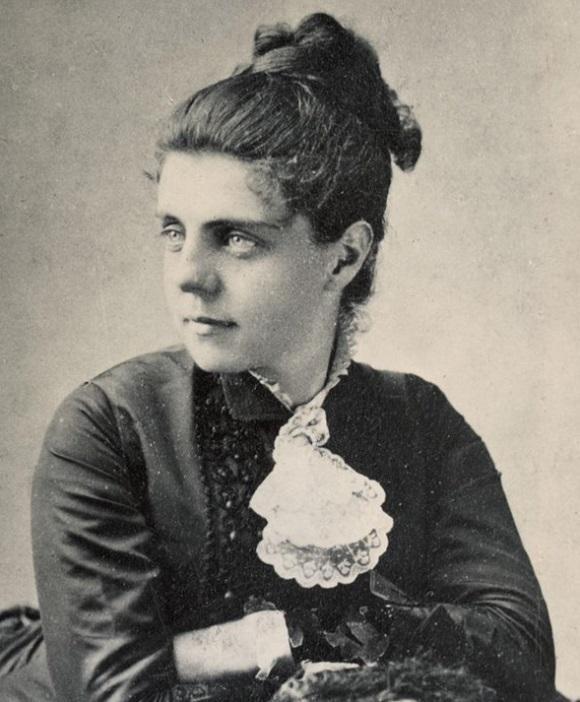Anna Roosevelt Cowles, the older sister of former US President Theodore Roosevelt, played an essential role in the life of her family. Despite her physical disability, she remained a constant source of emotional support and practical advice to her siblings. Anna was born in a brownstone home in New York City on January 18, 1855, to businessman and philanthropist Theodore “Thee” Roosevelt and socialite Martha Stewart “Mittie” Bulloch.
Anna’s childhood nickname was Bamie, a derivative of bambina, which means “baby girl” in Italian. Her family started calling her Bye when she became an adult because of her tremendous on-the-go energy. Her siblings were socialite Elliott Roosevelt, writer/speaker Corinne Roosevelt, and the famous Theodore Roosevelt Jr.
As a child, Bamie had a spinal ailment that led to her being partially crippled and confined by corrective steel braces. Her natural intelligence and energy made her magnetic to both men and women, and although she was not seen as a stunningly gorgeous woman like her mother or sisters-in-law, she remained an emotional pillar of strength for all the Roosevelts.
Anna took a central role in running the Roosevelt household from a young age because her mother was often distracted by illness or her busy social life. She became the emotional support of the family after the premature death of her father. Unlike many children in a similar situation, Bamie had the natural maturity, judgment, and wisdom to “hold the family together.”
When Theodore Roosevelt’s wife, Alice Hathaway Lee, died suddenly following childbirth, Bamie took custody of young Alice. She assumed parental responsibility for T.R.’s daughter during her early years, and Alice once remarked that Bamie was the most influential person in her entire life. As Alice grew older and more vivacious, Bamie became the one who provided discipline and structure that the Roosevelts in the White House were not able to exert.
Bamie’s sister-in-law, Anna Rebecca Hall, had wished for her to have custody of her children, Eleanor, Elliott Jr., and Gracie Hall Roosevelt, upon her death. However, custody of the children was not immediately possible because Elliott was still alive, and he could not be bypassed in the event of litigation. Bamie did open her home to Eleanor, who was a welcome visitor and made extended stays. Bamie was successful, though, in getting Eleanor out of the oppressive and harrowing home situation by demanding that she be sent to Allenswood School for girls in England, where Eleanor developed socially and emotionally. During Eleanor and Alice’s childhood, Bamie kept them informed of each other’s activities, helping to maintain something of a relationship between the two, though it was sometimes vexing.
Throughout his life, Bamie’s brother Theodore often turned to her for counsel in letters and personal conversations. She remained a trusted confidante for his entire career. As president, he would walk down to her residence at 18th and I in Washington so often that Bamie’s house was sometimes called the “other White House.” As she became more infirm, T.R. turned more and more to his daughter Alice for advice and to act as a go-between in delicate political situations.
In 1895 at age 40, Anna Roosevelt married US Navy Lt. Commander (later Rear Admiral) William Sheffield Cowles, a divorce who was 49. They had a son, William Jr., who married Margaret Alwyn Krech in 1920. After her marriage, Anna continued to provide support to her family. She oversaw the construction of Sagamore Hill, managed her brother’s estate while he tended to his ranch in the Dakota Territory, and served on the New York City Board of Education. She also continued her charity work, supporting causes such as the Visiting Nurse Service and the Women’s Roosevelt Memorial Association.
Anna Roosevelt Cowles died on August 25, 1931, at the age of 76, in New York City. She had been in declining health for several years and suffered from a heart ailment. Despite her failing health, she continued to be active and engaged in public service until shortly before her death.
Anna was survived by her husband, William Cowles, her son William Jr., and her sister Corinne. Her funeral was held at St. James’ Church in New York City, and she was buried next to her parents in the family plot at Youngs Memorial Cemetery in Oyster Bay, New York.
Anna’s death was widely mourned, and she was remembered for her contributions to her family and to her community. Her legacy as a philanthropist and social activist lived on through her son William Jr., who continued her work by supporting various charitable causes throughout his life.
Anna Roosevelt’s legacy lives on through her children and grandchildren. Her son William Jr. had two children, one of whom was First Lady Eleanor Roosevelt. Anna’s granddaughter, Eleanor, went on to become a prominent political figure in her own right, serving as First Lady of the United States from 1933 to 1945 and as a diplomat and human rights advocate throughout her life.
Anna Roosevelt’s life and accomplishments may not be as well-known as those of her famous brother and niece, but she was an influential figure in her own right. Her commitment to public service and charitable work served as an inspiration to future generations of Roosevelt family members, and her legacy continues to be celebrated today.
References:










